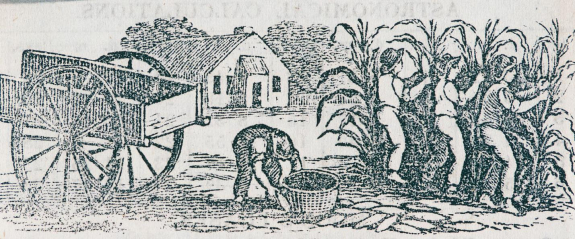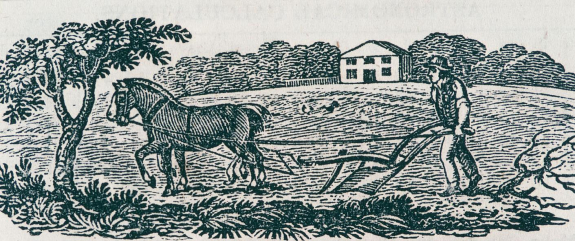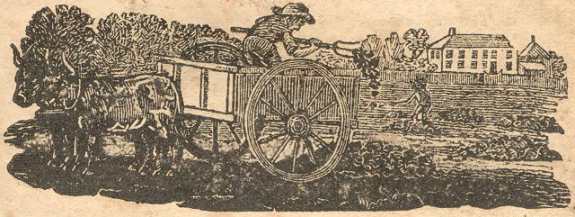
Colonists' gardening tricks
If
you're growing all of your own food, early spring is the hungry time,
when your stores are running low and you're craving fresh
vegetables. Over the three and a half years that we've been
farming our land, we've slowly learned that sun exposure is the most
important factor in early spring gardens, and early American colonists
came to the same conclusion. Whenever possible, they planted
their gardens on south-facing slopes to jumpstart the gardening season,
and hilled up soil on the north sides of rows to trap even more heat
and block the wind.
Modern organic growers
put down black plastic around their strawberries
to heat the ground and promote earlier crops. Once again, the
early colonists were way ahead of us. They saved charcoal dust
from their fires and spread it on the soil around early crops to absorb
the sun's heat.
New England's growing
season is short, so it was especially important
to start some seedlings inside. Instead of the modern plastic
growing trays, colonists dug sod in the fall, stored the clods of earth
and grass in their cellars over the winter, then planted their
seedlings in the inverted sod clumps the next spring. This worked
especially well for crops that didn't like to be transplanted --- the
colonists could simply bury the entire hunk of sod into the garden
where it merged with the soil and protected the seedling's roots.
Pest control was pretty
minimal at the time. One technique I'd
like to try is placing fresh onion skins on cucumber hills to control
squash bugs. Another of the settlers' methods --- scattering
ashes on plants to control flea beetles and other insects --- is
still
common today. If you're having a problem with slugs or snails,
why not do as the Plymouth colonists did and scatter cabbage leaves
between your plants, then collect the sluggy leaves in the early
morning and burn them?

| This post is part of our Early New England Gardens lunchtime series.
Read all of the entries: |
Want more in-depth information? Browse through our books.
Or explore more posts by date or by subject.
About us: Anna Hess and Mark Hamilton spent over a decade living self-sufficiently in the mountains of Virginia before moving north to start over from scratch in the foothills of Ohio. They've experimented with permaculture, no-till gardening, trailersteading, home-based microbusinesses and much more, writing about their adventures in both blogs and books.
Want to be notified when new comments are posted on this page? Click on the RSS button after you add a comment to subscribe to the comment feed, or simply check the box beside "email replies to me" while writing your comment.



Mark --- you're right! They should have collected the leaves and thrown them to the chickens.
Aliza --- trap crops work well, but only if you pay attention and dispose of them once they've collected your insects. Otherwise the trap crop can actually be a breeding ground for bad bugs. That's probably be a good thing to feed the chickens too.